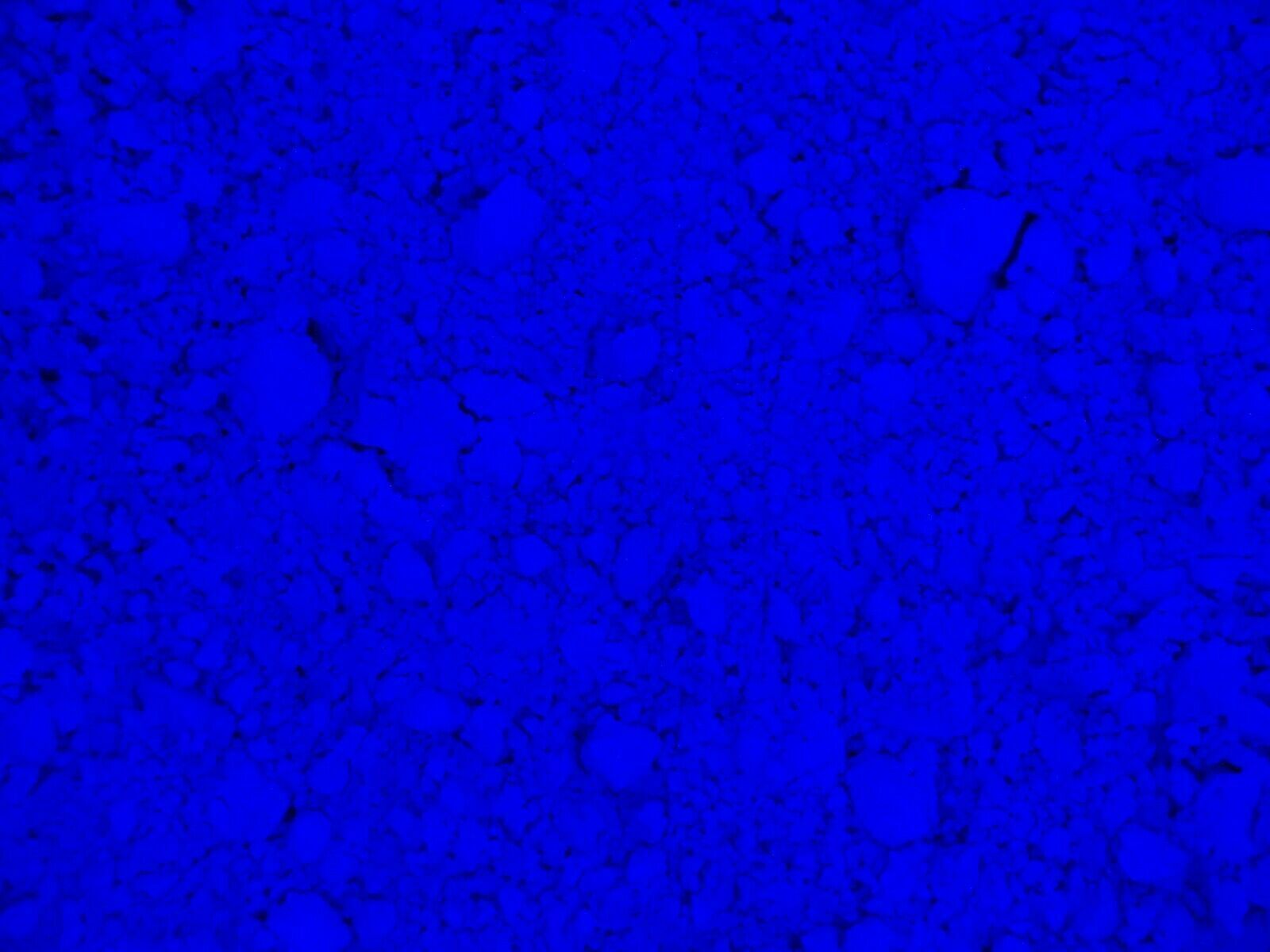
Rublev Colours Ultramarine Blue (Greenish Shade) artist oil color is an intense deep greenish-shade blue oil paint made from an inorganic pigment (ultramarine) of sodium aluminum silicate composition. It is a transparent, small-particle color with high tinting strength.

Rublev Colours Artists’ Oils: Ultramarine Blue (Greenish Shade)
Note: The scan of the “drawdown” (above) contains a pre-mixed paint film of 6 mils (0.006 inches) thickness applied to a standard test card to examine color consistency, opacity, and other qualities. The drawdowns show the full-color strength (mass tone) on the left and mixed in a 1:2 ratio with titanium white on the right. The bottom area of the drawdowns is scraped to show undertones.
Most commercial ultramarine oil paint is ground in safflower, poppy, or linseed oil. Ultramarine has poor ‘wetting’ characteristics in vegetable oils, especially alkali-refined linseed oil. Poor ‘wetting’ means it does not easily mix with oils because ultramarine is ‘hydrophilic’ or has an affinity for water. When the pigment is mixed with oil, it initially forms a stiff paste, but within a short period slumps and flows out. The initial amount of oil required to wet the pigment is greater than is required to form a paste once the pigment particles are coated by oil; hence, the paint softens.
Manufacturers add a wetting agent, such as aluminum stearate, to overcome the poor wetting property of ultramarine paint. Aluminum stearate, a metal soap of aluminum and stearic acid, is used to reduce the amount of oil needed to wet the pigment and to increase the body of the paint by forming a gel with the oil, thereby requiring less pigment. Ultramarine oil paint made with stearate does not slump and flow out but is short and buttery.
Small amounts of free fatty acids ordinarily present in pressed oils help form soaps at the pigment interface, thereby improving the wetting of pigments, aiding dispersion, and minimizing settling. Alkali-refined linseed oil, with its low free fatty acid content, creates pigment-wetting problems that can be mediated by pigments coated with metal soaps.
Some vegetable oils, such as poppy and walnut oil, have a high free fatty acid content that wets ultramarine pigment particles and avoids the slumping and flow-out phenomenon caused by poor wetting. Rublev Colours Ultramarine Blue (Green Shade) does not contain wetting agents, such as aluminum stearate. To mitigate the problem of poor wetting, we ground a green shade of ultramarine blue pigment in a blend of linseed oils. As a result, Rublev Colours Ultramarine Blue (Green Shade) is ‘long,’ that is, it flows with the brush (the opposite of ‘short’ paint), producing stringy brushmarks that stand up and do not flow out. Although ultramarine oil paint is not unique, this is a novel variation of this popular color.













